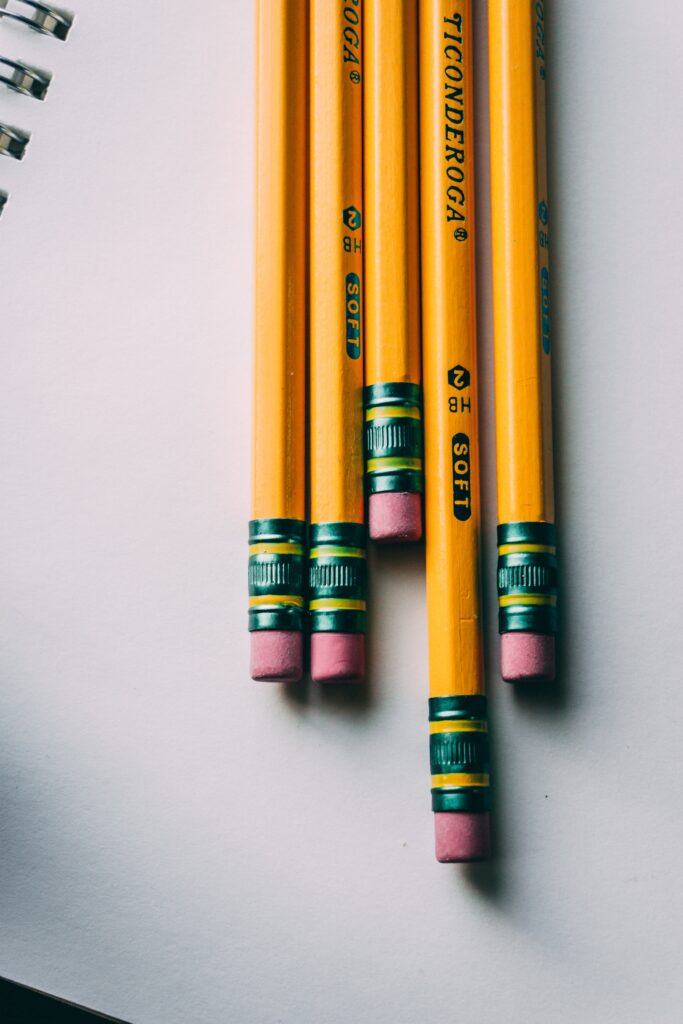In this video called “Creating a Culture of Documentation in the Classroom” by Unrulr, they talk about how important it is for teachers and students to document their learning. When you document something, you write it down or take a picture so you can remember it later. This helps with things like assessment, which is when teachers look at how well you’re doing in school, and creating portfolios, which are collections of your work.
In the video, they give two tips for creating a culture of documentation in your classroom. The first tip is to have a check-in culture that’s visible, which means making sure everyone can see what you and your classmates are documenting. The second tip is to start small and build good habits, which means to start by doing little bits of documenting and then slowly do more over time. It might feel a bit strange at first, but it’s important because it helps everyone in the class learn and grow together. So, if you want to create a culture of documentation in your classroom, you can watch this video to learn more.
Creating a culture of documentation means that everyone in the classroom, including the teachers and students, should be encouraged to write things down or take pictures to show what they’re learning. This helps with things like seeing how well you’re doing in school and collecting your work in a portfolio.
The video gives two tips for creating this culture. The first tip is to make sure everyone can see what you’re documenting so that it doesn’t feel like a lonely task. The second tip is to start small and slowly do more documenting over time. It might be a bit weird at first, but it’s important because it helps everyone learn and become better together. So, if you want to learn more about creating a culture of documentation in your classroom, you can watch this video by Unrulr.
The Power of Documentation in the Classroom
Documentation is a powerful tool that can help students in many ways. When we talk about documentation, we mean capturing and recording the learning process, reflecting on it, and sharing it with others. By documenting their learning journey, students can develop important skills, foster a growth mindset, build trust, and serve the community. Let’s explore the different components of learner documentation and the tips for creating a strong culture of documentation in the classroom.
Creating a Culture of Documentation
Importance of a culture of documentation
Having a culture of documentation means that documenting learning becomes a regular and natural part of the classroom. It’s not just an isolated activity; it’s an ongoing process. When we create a culture of documentation, we promote a deeper level of reflection and engagement among students.
Benefits of a culture of documentation
A culture of documentation has several benefits. It helps students make their thinking visible, enabling teachers to understand their learning process better. It also promotes self-reflection and self-improvement, as students can review their own work and identify areas for growth. Additionally, documentation fosters collaboration and builds connections among students, as they share and discuss their work with each other.
Building a culture of documentation
Building a culture of documentation requires effort and intentionality. Teachers can start by modeling the practice themselves, demonstrating the value of documentation through their own examples. It’s also crucial to create a safe and supportive environment where students feel comfortable sharing their work. Regular check-ins and discussions about documentation can further strengthen this culture.
Components of Learner Documentation
When we talk about learner documentation, we refer to three main components: reflections, process, and products.
Reflections
Reflections are a key part of the documentation process. They involve thinking about what was learned, how it was learned, and what can be done differently next time. Through reflections, students gain a deeper understanding of their learning experiences and can make connections between different concepts and ideas.
Process
The process component of documentation focuses on capturing the journey of learning. It involves recording the steps taken, the challenges encountered, and the strategies used to overcome them. Process documentation allows students to analyze their approach to learning, helps them identify effective strategies, and enables them to track their progress over time.
Products
The product component of documentation involves showcasing the final outcomes of a student’s learning journey. It could be a project, a piece of artwork, a research paper, or any other tangible representation of their learning. Sharing products not only allows students to celebrate their achievements but also provides an opportunity for feedback and collaboration with peers and teachers.
Tip 1: Have a Visible Check-In Culture
Encouraging learners to check in regularly
One way to establish a culture of documentation is by encouraging learners to check in regularly. This could be through daily or weekly reflections, where students take a few moments to think about what they learned and how they feel about their progress. By checking in regularly, students become more aware of their learning and can identify areas where they need support or further exploration.
Creating a communal structure
To foster a visible check-in culture, it’s essential to create a communal structure. This can be done by providing a physical or digital space where students can share their reflections with their peers and teachers. It could be a bulletin board, a shared Google document, or an online discussion forum. This structure allows for collaboration, feedback, and a sense of community among learners.
Sharing and discussing reflections and documentation
Lastly, it’s important to encourage students to share and discuss their reflections and documentation with their peers and teachers. This can be done through group discussions, presentations, or even online platforms. By sharing their work, students not only learn from each other but also build confidence and a sense of pride in their achievements.
Tip 2: Start Small and Build Good Habits
Initiating small documentation practices
When starting with documentation, it’s best to begin with small and manageable practices. For example, students can be asked to write short reflections at the end of each class or capture their learning process through photos or videos. Starting small allows students to ease into the practice and gradually build their skills and confidence.
Continuously reinforcing and expanding documentation habits
Once students have established some basic documentation habits, it’s important to continuously reinforce and expand upon them. This can be done by setting aside dedicated time for reflection and documentation, providing prompts or guiding questions to stimulate thinking, and offering feedback and support to help students improve their documentation skills.
Promoting growth mindset through documentation
Documentation can play a significant role in promoting a growth mindset among students. By documenting their learning journey, students can see that mistakes and failures are an essential part of the learning process. They can reflect on what went wrong, learn from it, and apply that knowledge to future situations. Through documentation, students develop resilience, perseverance, and a belief in their own ability to grow and improve.
Fostering Growth Mindset through Documentation
Encouraging self-reflection and self-improvement
Documentation provides a platform for students to engage in self-reflection and self-improvement. When students take the time to reflect on their learning experiences, they can identify their strengths and weaknesses, set goals for themselves, and make a plan for growth. By actively participating in their own learning process, students develop a growth mindset and become more motivated and confident learners.
Developing a sense of ownership and agency
Through documentation, students develop a sense of ownership and agency over their own learning. They become active participants rather than passive recipients of knowledge. By documenting their process and progress, students take responsibility for their learning and become more engaged and invested in their education.
Promoting a growth mindset in learners
Documentation practices also help promote a growth mindset in learners by celebrating effort and progress rather than focusing solely on the end result. When students document their learning journey, they emphasize the value of the process, the growth they have made, and the lessons learned along the way. This shift in perspective encourages students to embrace challenges, persevere through difficulties, and see setbacks as opportunities for growth.
Building Trust through Documentation
Transparency and accountability
Documentation fosters transparency and accountability in the classroom. When students document their learning process and share their reflections, they become more accountable to themselves, their peers, and their teachers. This transparency builds trust and creates a positive learning environment where students feel supported and valued.
Demonstrating progress and growth
Documentation allows students to demonstrate their progress and growth over time. By keeping a record of their work, students can visually see their improvement and track their development. This not only boosts their confidence but also provides evidence of their efforts and achievements. It also helps teachers recognize and celebrate their students’ progress, further strengthening the bond of trust.
Encouraging collaboration and feedback
Documentation practices facilitate collaboration and provide opportunities for meaningful feedback. When students share their work, reflections, and products with their peers and teachers, they invite different perspectives and suggestions for improvement. This collaborative process not only helps students refine their work but also cultivates a sense of community and support among learners.
Serving Beyond Self through Documentation
Promoting empathy and understanding
Documentation serves as a powerful tool for promoting empathy and understanding among students. By documenting their learning journey, students develop a deeper understanding of themselves and others. They become more aware of the diverse experiences, perspectives, and challenges faced by their peers. Through sharing and reflecting on their documentation, students develop empathy and learn to appreciate the uniqueness of each individual.
Creating a sense of purpose and social responsibility
Documentation practices can also help students understand the importance of their learning in a broader context. By documenting their work and reflecting on its impact on themselves and others, students develop a sense of purpose and social responsibility. They recognize that their learning has the potential to make a difference in the world and are motivated to work towards creating positive change.
Fostering a community of learners
Through documentation, students become part of a community of learners. They can learn from each other’s experiences, collaborate on projects, and support one another’s growth. By sharing their documentation, students create opportunities for connection, feedback, and celebration. This sense of community fosters a positive and inclusive learning environment where everyone feels valued and supported.
Implementing Documentation Practices in the Classroom
Utilizing digital tools and platforms
Digital tools and platforms can greatly enhance documentation practices in the classroom. Teachers can encourage students to use online platforms, such as blogs, digital portfolios, or collaborative document-sharing platforms, to document their work and reflections. These tools allow for easy sharing, organization, and accessibility, making the documentation process more efficient and effective. However, it’s important to ensure that students have the necessary resources and support to utilize these tools effectively.
Incorporating documentation into daily routines
To establish documentation as a habit, it’s important to incorporate it into daily routines. Teachers can set aside dedicated time for reflection and documentation during class or create regular check-in rituals. By making documentation a consistent part of the learning process, students become more comfortable with it and can reap the benefits of this practice.
Providing guidance and support to learners
Lastly, teachers should provide guidance and support to learners throughout the documentation process. This can be done through modeling effective documentation practices, providing prompts or guiding questions for reflection, offering feedback and suggestions for improvement, and celebrating student achievements. By actively engaging with the documentation process, teachers can inspire and empower their students to take ownership of their learning.

Conclusion
Documentation is a powerful tool that can transform the learning experience for students. By creating a culture of documentation, incorporating small and consistent practices, and promoting a growth mindset, teachers can help students develop important skills, build trust, and serve their community. Through reflections, process documentation, and sharing their products, students gain a deeper understanding of their learning journey, develop a sense of ownership and agency, and foster empathy and understanding. By implementing documentation practices in the classroom, utilizing digital tools, and providing guidance and support, teachers can empower students to become active, reflective, and lifelong learners. So, start documenting your learning today and unlock the power of documentation!






